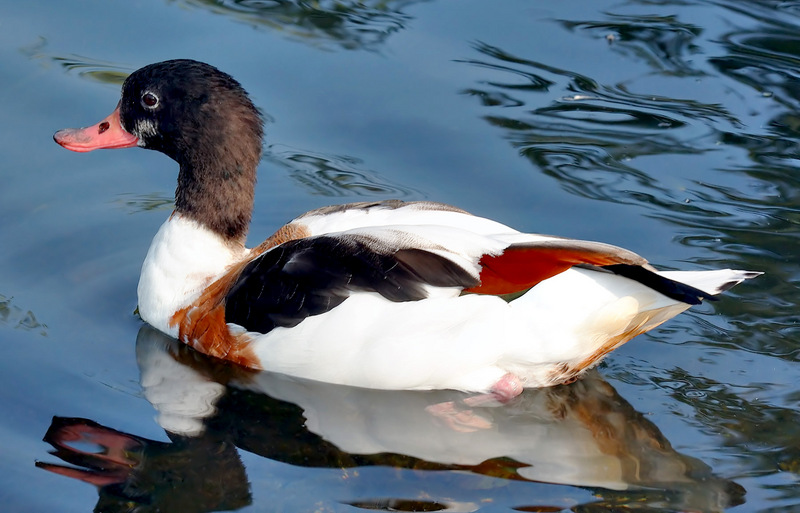|
Shelduck (Genus: Tadorna) - Wiki
| 제목: | Shelduck (Genus: Tadorna) - Wiki
| |

| 해상도: 1800x1155
파일크기: 395075 Bytes
등록시간: 2008:01:08 17:19:46
|
Shelduck
From Wikipedia, the free encyclopedia
Order: Anseriformes
Family: Anatidae
Subfamily: Tadorninae
[Photo] Female Common Shelduck (Tadorna tadorna). Date: 2005-10-08. Author: Andr?? Karwath aka Aka (http://commons.wikimedia.org/wiki/User:Aka).
The Shelducks, genus Tadorna, are a group of large birds in the Tadorninae subfamily of the Anatidae, the biological family that includes the ducks and most duck-like waterfowl such as the geese and swans.
The shelducks are a group of larger often semi-terrestrial waterfowl, which can be seen as intermediate between geese (Anserinae) and ducks. They are mid-sized (some 50-60 cm) Old World waterfowl. The sexes are colored slightly different in most species, and all have a characteristic upperwing coloration in flight: the tertiary remiges form a green speculum, the secondaries and primaries are black, and the coverts (forewing) are white. Their diet consists of small shore animals (winkles, crabs etc) as well as grasses and other plants.
Systematics
The genus name Tadorna comes from Celtic roots and means "pied waterfowl", essentially the same as the English "shelduck".
The namesake genus of the Tadorninae, Tadorna is very close to the Egyptian Goose and its extinct relatives from the Madagascar region, Alopochen. While the classical shelducks for a group that is obviously monophyletic, the interrelationships of these, the aberrant Common and especially Radjah Shelducks, and the Egyptian Goose were found to be poorly resolved by mtDNA cytochrome b sequence data; this genus may thus be paraphyletic.
- Ruddy Shelduck Tadorna ferruginea
- Cape Shelduck Tadorna cana
- Australian Shelduck Tadorna tadornoides
- Paradise Shelduck Tadorna variegata
- Crested Shelduck Tadorna cristata - possibly extinct (late 20th century?)
- Common Shelduck Tadorna tadorna
- Radjah Shelduck Tadorna radjah
Fossil bones from Dorkovo (Bulgaria) described as Balcanas pliocaenica may actually belong to this genus. They have even been proposed to be referable to the Common Shelduck, but their Early Pliocene age makes this rather unlikely.
http://en.wikipedia.org/wiki/Shelduck
| The text in this page is based on the copyrighted Wikipedia article shown in above URL. It is used under the GNU Free Documentation License. You may redistribute it, verbatim or modified, providing that you comply with the terms of the GFDL. |
|
^o^
동물그림창고 똑똑전화 누리집
^o^
|
|